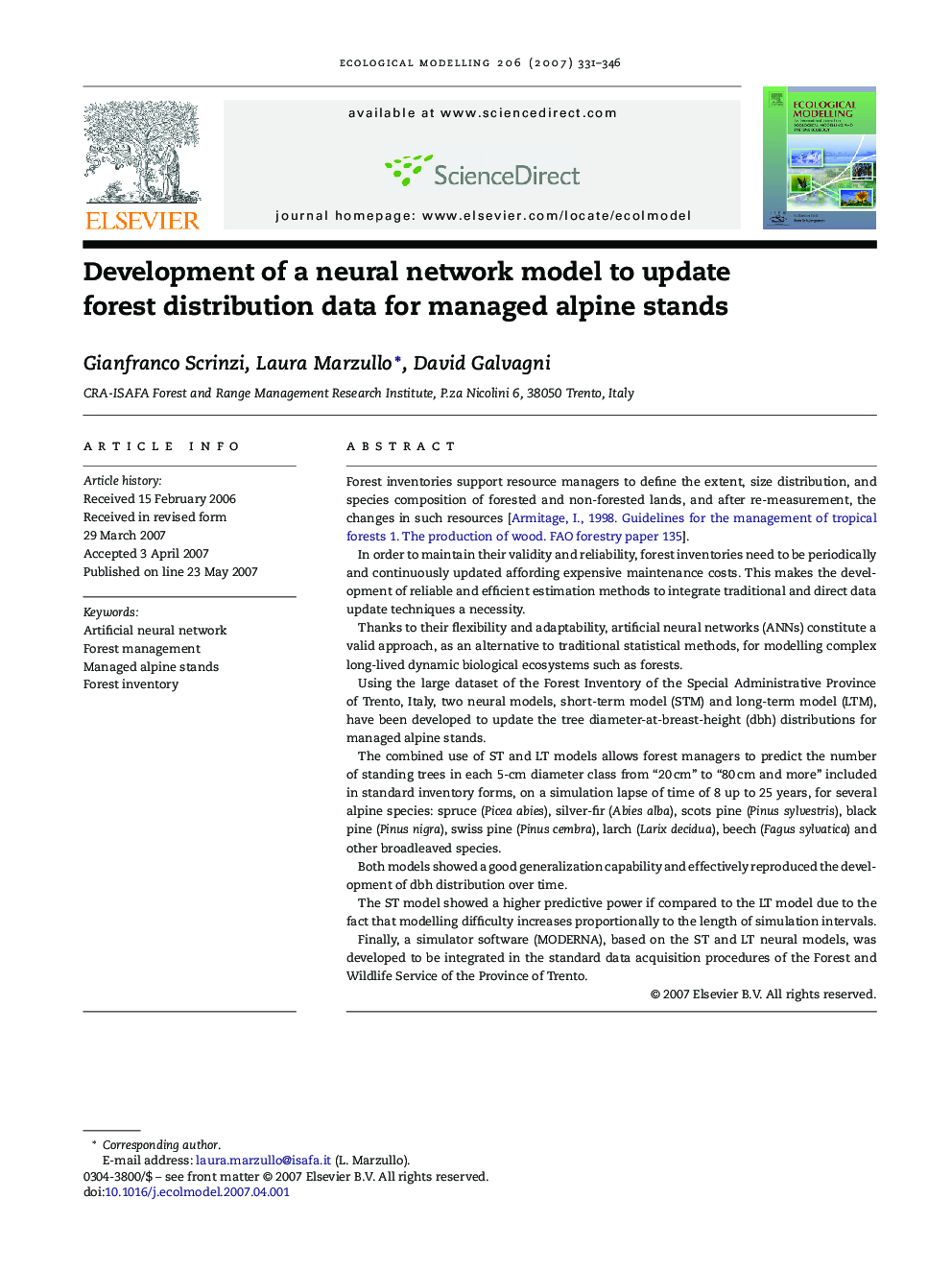| کد مقاله | کد نشریه | سال انتشار | مقاله انگلیسی | نسخه تمام متن |
|---|---|---|---|---|
| 4378646 | 1617544 | 2007 | 16 صفحه PDF | دانلود رایگان |

Forest inventories support resource managers to define the extent, size distribution, and species composition of forested and non-forested lands, and after re-measurement, the changes in such resources [Armitage, I., 1998. Guidelines for the management of tropical forests 1. The production of wood. FAO forestry paper 135].In order to maintain their validity and reliability, forest inventories need to be periodically and continuously updated affording expensive maintenance costs. This makes the development of reliable and efficient estimation methods to integrate traditional and direct data update techniques a necessity.Thanks to their flexibility and adaptability, artificial neural networks (ANNs) constitute a valid approach, as an alternative to traditional statistical methods, for modelling complex long-lived dynamic biological ecosystems such as forests.Using the large dataset of the Forest Inventory of the Special Administrative Province of Trento, Italy, two neural models, short-term model (STM) and long-term model (LTM), have been developed to update the tree diameter-at-breast-height (dbh) distributions for managed alpine stands.The combined use of ST and LT models allows forest managers to predict the number of standing trees in each 5-cm diameter class from “20 cm” to “80 cm and more” included in standard inventory forms, on a simulation lapse of time of 8 up to 25 years, for several alpine species: spruce (Picea abies), silver-fir (Abies alba), scots pine (Pinus sylvestris), black pine (Pinus nigra), swiss pine (Pinus cembra), larch (Larix decidua), beech (Fagus sylvatica) and other broadleaved species.Both models showed a good generalization capability and effectively reproduced the development of dbh distribution over time.The ST model showed a higher predictive power if compared to the LT model due to the fact that modelling difficulty increases proportionally to the length of simulation intervals.Finally, a simulator software (MODERNA), based on the ST and LT neural models, was developed to be integrated in the standard data acquisition procedures of the Forest and Wildlife Service of the Province of Trento.
Journal: Ecological Modelling - Volume 206, Issues 3–4, 24 August 2007, Pages 331–346